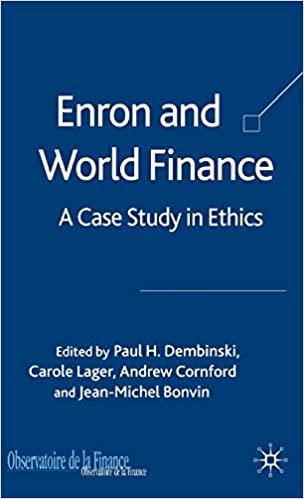Question
Stock A has a beta of .5, and investors expect it to return 5%. Stock B has a beta of 1.5, and investors expect it
| Stock A has a beta of .5, and investors expect it to return 5%. Stock B has a beta of 1.5, and investors expect it to return 13%. Use the CAPM to find the expected rate of return and the market risk premium on the market. (Do not round intermediate calculations. Round your answers to 1 decimal place.) |
|
|
|
| Expected rate of return | % |
| Market risk premium | % |
| Micro Spinoffs, Inc., issued 10-year debt a year ago at par value with a coupon rate of 5%, paid annually. Today, the debt is selling at $1,210. The firm%u2019s tax bracket is 20%. |
|
|
| Micro Spinoffs also has preferred stock outstanding. The stock pays a dividend of $5 per share, and the stock sells for $50. |
|
|
| Micro Spinoffs%u2019s cost of equity is 12%. What is its WACC if equity is 50%, preferred stock is 10%, and debt is 40% of total capital? (Do not round intermediate calculations. Round your answer to 2 decimal places.) |
| WACC | % |
| Micro Spinoffs, Inc., issued 10-year debt a year ago at par value with a coupon rate of 8%, paid annually. Today, the debt is selling at $1,280. If the firm%u2019s tax bracket is 40%, what is its after-tax cost of debt? (Do not round intermediate calculations. Round your answer to 2 decimal places.) |
| After-tax cost of debt | % |
| Moonscape has just completed an initial public offering. The firm sold 1 million shares at an offer price of $10 per share. The underwriting spread was $.6 a share. The price of the stock closed at $16 per share at the end of the first day of trading. The firm incurred $200,000 in legal, administrative, and other costs. What were flotation costs as a fraction of funds raised? (Do not round intermediate calculations. Round your answer to 1 decimal place.) |
| Fraction of funds raised | % |
| Pandora, Inc., makes a rights issue at a subscription price of $8 a share. One new share can be purchased for every six shares held. Before the issue there were 12 million shares outstanding and the share price was $11. |
| a. | What is the total amount of new money raised? (Enter your answer in millions rounded to 1 decimal place.) |
| New money raised | $ million |
| b. | What is the expected stock price after the rights are issued? (Round your answer to 2 decimal places.) |
| New share price | $ |
| A firm currently has a debt-equity ratio of 1/5. The debt, which is virtually riskless, pays an interest rate of 6.6%. The expected rate of return on the equity is 14%. What would happen to the expected rate of return on equity if the firm reduced its debt-equity ratio to 1/6? Assume the firm pays no taxes. (Do not round intermediate calculations. Round your answer to 2 decimal places.) |
| Expected rate of return equity | % |
Step by Step Solution
There are 3 Steps involved in it
Step: 1

Get Instant Access to Expert-Tailored Solutions
See step-by-step solutions with expert insights and AI powered tools for academic success
Step: 2

Step: 3

Ace Your Homework with AI
Get the answers you need in no time with our AI-driven, step-by-step assistance
Get Started


